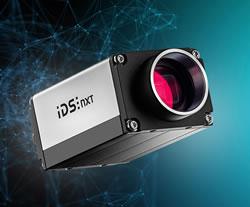H2 Clipper Transforms Aviation and Aerospace Manufacturing with Patented Swarm Robotics Innovation
The use of Swarm Robotics in aerospace production significantly reduces manufacturing time and costs, while enabling unparalleled precision and continuous round-the-clock autonomous production.
Santa Barbara, CA, April 3, 2025 - H2 Clipper, Inc. ("H2C"), a leader in sustainable hydrogen-based infrastructure and transportation, has been granted U.S. Patent No. 12,234,035 for the company's innovative approach to using autonomous and semi-autonomous robotic swarms in aircraft and aerospace manufacturing. This milestone marks H2C's 15th awarded patent.
"The issuance of this patent marks a pivotal moment in the evolution of aerospace and aviation manufacturing. By replacing traditional assembly lines with robotic swarms, this breakthrough enables aircraft and large aerospace assets to be built faster, at a significantly lower cost, and with far greater precision," said Rinaldo Brutoco, H2C Founder and CEO. "Conservative estimates based on current aerospace production benchmarks suggest this approach can reduce total manufacturing costs by 40% or more, and cut production timeframes by up to 60%, while simultaneously improving quality."
H2C's newly patented system employs a network of robots that operate collaboratively and autonomously to construct large aerospace structures with unprecedented efficiency and a significantly smaller production facility footprint. The innovation includes:
• Automated Manufacturing: Robots work in a coordinated "swarm" to assemble airframes, attach the exterior skin, install structural and internal components, perform bonding and fastening operations, conduct in-process quality inspections, and carry-out other complex, high-precision tasks.
• AI-Driven Optimization: Machine learning and generative AI guide the robotic swarm to self-correct, improve manufacturing precision, reduce errors, and optimize construction timelines.
• Scalability and Safety: The system uses built-in sensors and AI-driven oversight to safely manage all operations, assuring collision-free operation and eliminating the need for workers to operate at dangerous heights. With no fixed assembly line or gantries required, manufacturing can be supervised remotely and scaled across multiple locations.
• Heavy-Lift Robotics Integration: The technology enables large-scale structures to be constructed entirely in place—horizontally or vertically—using autonomous robots capable of repositioning and aligning major components. This flexibility supports multiple assembly approaches while reducing infrastructure requirements and improving safety.
Whereas traditionally, aircraft must be moved through multiple stages, requiring massive facilities, complex scheduling and high logistical overhead, these assets are built in place using H2C's approach, eliminating costly movement, saving time, and reducing the need for assembly line infrastructure. H2C's focus on Swarm Robotics arose from its pursuit of a manufacturing approach that would be suited for constructing its Pipeline-in-the-Sky™ airships. But it soon realized the applicability of the novel approach to addressing multiple challenges faced in all aviation and aerospace manufacturing. With the continuation patent now issued, the company plans to assemble a select group of industry leaders in aerospace engineering, robotics, artificial intelligence, regulatory affairs, and advanced manufacturing to guide the next phase of development and demonstration. This expert team will play a key role in shaping a technology roadmap that supports potential licensing to OEMs—and may lay the groundwork for a broader industry consortium to accelerate adoption of Swarm Robotics across the aerospace sector.
"This patent represents a game-changing moment for aerospace manufacturing—a shift as significant as the invention of the assembly line itself," added Brutoco. "Swarm Robotics gives OEMs the ability to build aircraft and spacecraft smarter, faster, and more affordably than ever before, opening the door to a new era in aviation and the future of flight."
H2C was selected in 2021 for inclusion in Dassault Systèmes' prestigious 3DEXPERIENCE® Lab accelerator program; and in 2024, H2C and Dassault agreed on a renewed three-year contract to further develop robotic software for this novel construction method.
H2C is represented in intellectual property matters by John C. Serio, a Partner in the Boston Intellectual Property and Technology Group at Withers Worldwide.
About H2 Clipper, Inc. (H2C)
H2C is the developer of high-speed, Pipeline-in-the-Sky™ hydrogen-powered airships for long distance global transport that use no fossil fuels and have a host of commercial and humanitarian applications, and of the novel H2C Safety Pipe™ for "last mile" distribution of hydrogen to end users. Since 2008, the company has made significant strategic investments to research, develop, and patent core IP in modern airship design, including advanced software systems, and midstream solutions for efficient delivery of both gaseous and liquid hydrogen.
Featured Product

3D Vision: Ensenso B now also available as a mono version!
This compact 3D camera series combines a very short working distance, a large field of view and a high depth of field - perfect for bin picking applications. With its ability to capture multiple objects over a large area, it can help robots empty containers more efficiently. Now available from IDS Imaging Development Systems. In the color version of the Ensenso B, the stereo system is equipped with two RGB image sensors. This saves additional sensors and reduces installation space and hardware costs. Now, you can also choose your model to be equipped with two 5 MP mono sensors, achieving impressively high spatial precision. With enhanced sharpness and accuracy, you can tackle applications where absolute precision is essential. The great strength of the Ensenso B lies in the very precise detection of objects at close range. It offers a wide field of view and an impressively high depth of field. This means that the area in which an object is in focus is unusually large. At a distance of 30 centimetres between the camera and the object, the Z-accuracy is approx. 0.1 millimetres. The maximum working distance is 2 meters. This 3D camera series complies with protection class IP65/67 and is ideal for use in industrial environments.
